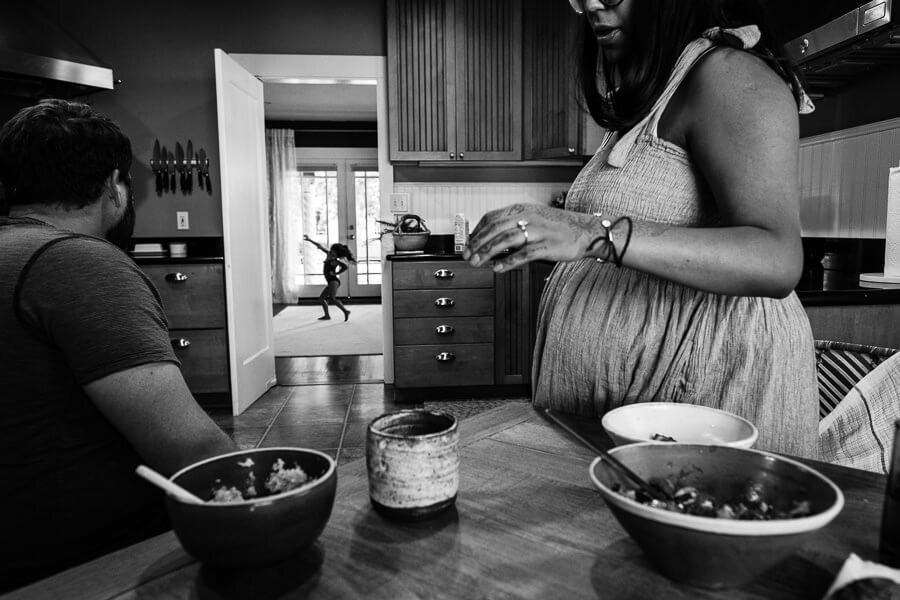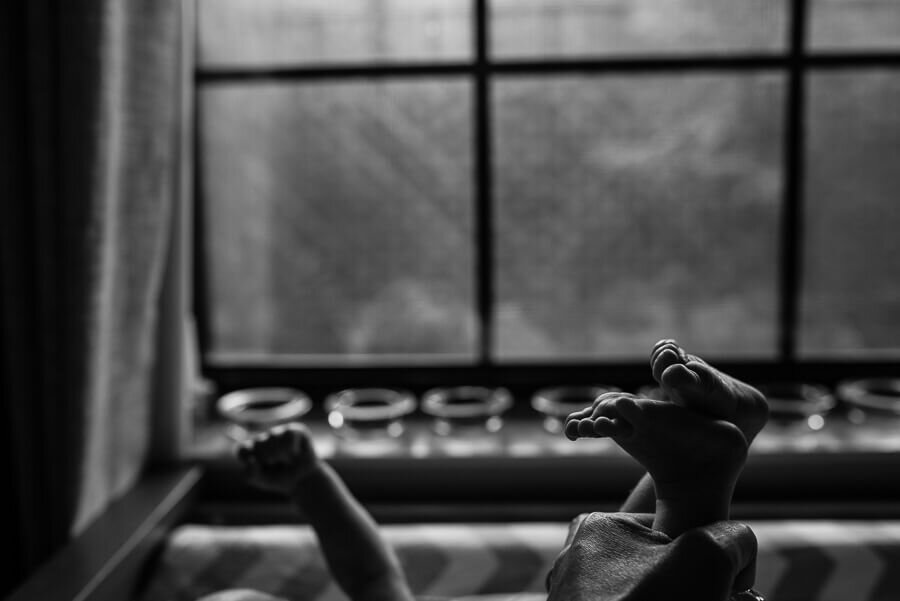51 things I’ve learned about documentary family photography in 5 years
Myra's natural Fresh 48 hospital session | San Francisco Bay Area documentary newborn photographer
I just celebrated 5 years since my very first documentary session. While it feels like these years have gone by quickly, I've collected *just a few* realizations along the way:
1. The 35mm lens could be glued onto my camera body – but having a 24mm on my 2nd camera body is a great addition (could also be glued on)
2. Don’t be scared to get closer – even closer than you are thinking right now
3. Remember to step back – and grab that wide lens
4. Working with the same gear year after year and figuring out how you like to edit *all your photos* – not just photo-to-photo - makes your work consistent and helps you develop a recognizable style, instead of always chasing something new
5. Buying – and implementing! – courses/workshops is a better investment than new gear
6. Err on the side of business and marketing courses over photography courses, if you want to make a living
Girl dancing, mom and dad watch
7. Be selective about when you press the shutter – but when the moment comes, take multiple photos
8. Embrace the grain instead of feeling bad about it when there’s no better option
9. Photo books are the best way to tell the story of the day
10. Shoot at F4-11 when you want several layers to make sense
11. Emotion trumps composition
12. A crappy photo will still be crappy in black-and-white
13. Buying more gear won’t make your photographer eye better
14. Shoot what interests you – even if you think your clients could think it’s weird. Usually they don’t!
15. The families you work with will not be as critical as your inner critic – so don’t believe your inner critic
16. Photos *almost* always look better in print, so don't worry about them not turning out beautiful if they are beautiful on your screen (though remember to check that your brightness isn't dialed up high)
17. The older I get, the harder it is to keep the camera straight as I follow along busy kiddo life on the floor
18. Once you’ve packed up your camera, divert your eyes from the baby who keeps making cute faces
19. Shoot from the eye-level of your subject – until there's a *good compositional reason* to change perspective
20. Instead of capturing/posting photos you think your followers will like, capture/post the photos that move you
21. There’s a difference between “shooting at” something interesting, and making a good photo of something interesting
22. Documentary family photography is the most challenging approach to family photography because of the uncontrolled environment, zero directing of the family, and the constantly changing lighting conditions – allow yourself time to get decent, good, and better
23. Luck is rarely involved in capturing "lucky" photos – it’s about being prepared and open for *anything* to happen and capturing the magic as it suddenly pops up
24. Listening to the family’s stories helps you find the photos they will cherish
25. Only follow photographers who inspire you and make you feel excited to shoot
26. It’s often better to underexpose than overexpose
27. The longer the session, the more natural the family’s day gets and the more access you get to affectionate moments
28. Parents will love the photos even if they aren’t all “portfolio worthy” – if you’re getting 1-2 portfolio photographs per session you’re ahead of all the games
29. Don’t subscribe to magazines and newsletters that are filled with photography gear – and try to not keep up with all the latest gear – to keep your work space clutter-free
30. Sign up for courses/workshops that correspond to the phase you are going through in your business, instead of signing up for *everything* (and implementing nothing)
31. Shoot as if it was the last time someone was making pictures of the people or the place
32. Be ruthless when editing (culling), so that you spend less time post-processing
33. Decide on 3-5 types of moments/photos to look for throughout each session – the things that you believe matter the most when it comes to family photos
34. Make photos that don’t have people in them – but that include a human element
35. Allow limitations (“we don’t want pictures of our baby’s face online”) to push you creatively for a few photos you may not otherwise have thought to make
36. Long focal lengths make the viewer detached from what’s going on
37. The more often you photograph a family, the more comfortable they get – and the more meaningful the photos get for them
38. Look for similarities between the now and the past sessions with the same family
39. The reaction is sometimes more interesting than the action – focus on the reaction but keep the action visible within the frame, too
40. Don’t worry about not getting awards to the point of giving up – your clients’ reactions matter *SO MUCH MORE*
41. Don’t be afraid to put your camera down and interact with the family
42. Likes and comments don’t measure how good your photograph is, and should not change how you feel about it
43. Look at amazing photography, and think about what makes them so
44. So far I have not regretted taking a photo – but I have regretted not taking some
45. Don’t worry if your photos qualify as “documentary” – you do what you want to do in your business, and don't submit non-documentary work to documentary photography contests
46. Follow your gut instinct
47. You can find the best of moments to photograph in the most mundane, slow moments
48. Don’t worry about critique from others unless they are also making themselves vulnerable by sharing their work
49. Try to clean up your background by moving around – but embrace any mess or background element that enhances the photo
50. You can’t control the environment or the people in it, but you can control when you press the shutter
51. Even if black-and-white is my greatest love, some photos work 1,700x better in color
Mom eating, newborn baby and toddler sleeping










